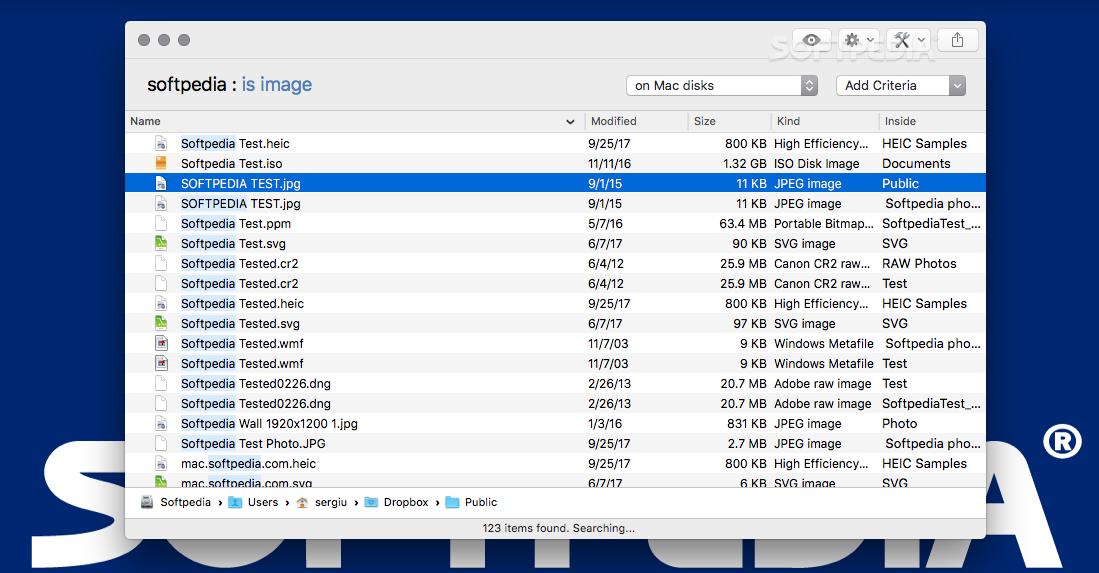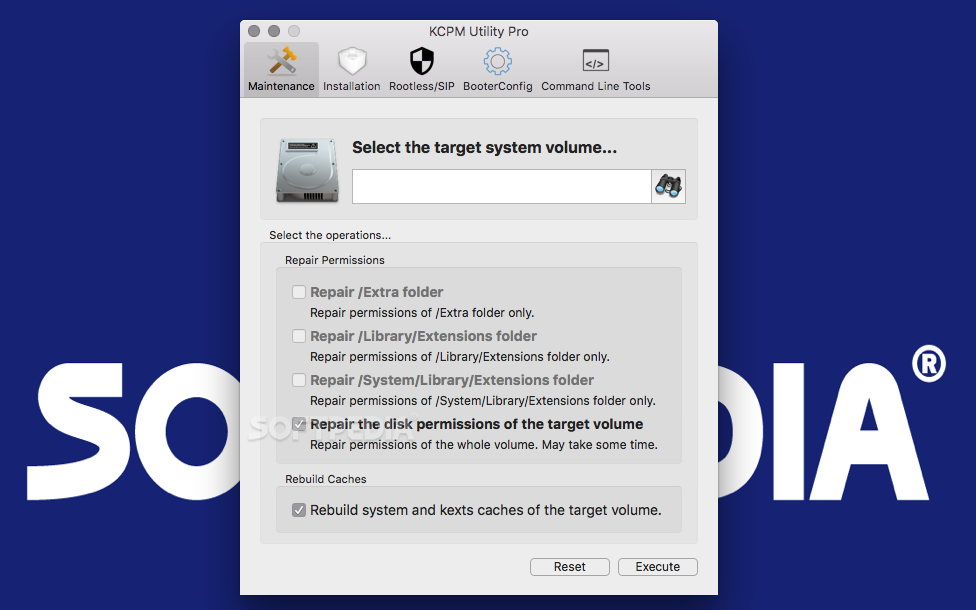Apr 06, 2021 If you're a fan of macOS but not Macs, or at least Apple's pricing for them, you might have considered building a Hackintosh at some point. While installing macOS on a regular PC is entirely feasible, it's far from simple, and it requires specific hardware for everything to work properly. Using DiskWarrior 5.2 while started (booted) from High Sierra or Mojave. What's in the works. The next major release of DiskWarrior will include the ability to rebuild APFS disks. Apple has recently released the APFS format documentation. Our developers are now using that documentation to update DiskWarrior to be able to safely rebuild APFS disks. To an average computer user, any challenge with the hardware or even software warrants the need of a technician. This need not be the case and as a matter of fact, it is quite easy to troubleshoot some of the common problems that your PC might be facing.
- DiskWarrior should now start and you can repair your drive. Improve this answer. Follow answered Aug 6 '16 at 13:20. Duncanm duncanm.
- May 13, 2013 Called Apple and THEY couldn’t help either (after asking me if i tried everything -which I had) So I bit the bullet and bought DiskWarrior for $128 and crossed my fingers. It could access the drive and instead of rebuilding the drive’s directory I made it copy my files to a new external.
Using DiskWarrior 5.2 while started (booted) from High Sierra, Mojave, Catalina or Big Sur.
What you need to know (Click here for the summary)
1) Apple File System (APFS) disks (typically a macOS 10.14 Mojave, 10.15 Catalina or 11.0 Big Sur Startup Disk) are recognized but ARE NOT able to be rebuilt by DiskWarrior 5.2. Click here to learn how to identify an APFS disk.
2) M1 (ARM) equipped Macs are not currently supported. See our Big Sur Compatibility Page.
3) Click here to join the Mailing List to be notified of progress regarding Apple File System (APFS) support, M1 (ARM) support, and updates to DiskWarrior.
Diskwarrior Free
4) Mac OS Extended (HFS Plus) disks can be rebuilt as before, when rebuilding from an Intel Mac.
5) The Startup Disk of Macs are automatically converted from Mac OS Extended (HFS Plus) to Apple File System (APFS) when installing or upgrading to macOS 10.14 Mojave, macOS 10.15 Catalina or macOS 11.0 Big Sur. Only internal SSD drives are converted to APFS by macOS 10.13 High Sierra.
6) External drives are not automatically converted to Apple File System (APFS). Your Mac OS Extended external drives can be rebuilt as before.
7) DiskWarrior 5.2 is compatible with macOS 10.13 High Sierra, macOS 10.14 Mojave, macOS 10.15 Catalina and macOS 11.0 Big Sur when rebuilding Mac OS Extended external drives.
8) DiskWarrior 5.2 now runs within macOS 10.14 Mojave and macOS 10.15 Catalina Recovery.
9) The Preview application in DiskWarrior can now copy files to APFS disks when recovering data from a failing Mac OS Extended (HFS Plus) disk.
10) Numerous minor updates were made to accommodate additional security measures in macOS 10.14 Mojave and macOS 10.15 Catalina.
11) To rebuild Time Machine disks in macOS 10.14 Mojave, macOS 10.15 Catalina and macOS 11.0 Big Sur, DiskWarrior must be given “Full Disk Access” from within System Preferences. Otherwise, they can be be rebuilt from macOS Recovery or the DiskWarrior Recovery flash drive. Starting with macOS 11.0 Big Sur, Time Machine disks can be formatted as APFS and cannot be rebuilt. Mac OS Extended (HFS Plus) Time Machine disks can be rebuilt under Big Sur.
The following applies only when running an installed copy of DiskWarrior from within macOS 10.13 High Sierra, macOS 10.14 Mojave, 10.15 Catalina and 11 Big Sur; not when booted from the DiskWarrior flash drive or macOS Recovery.

12) Due to the ever enhancing security of macOS you might need to first 'Allow' the system extension portion of DiskWarrior to be loaded on your Mac. The first time you launch DiskWarrior 5.2, the system extension might be blocked. You will only need to allow the system extension once.
Follow the instructions in the System Extension Blocked message to allow the DiskWarrior system extension software to be loaded. Open the Security & Privacy System Preference and click the lock and then click the Allow button.
Quit DiskWarrior, reboot your Mac and launch DiskWarrior again.
Click here for a step-by-step video guide on installing DiskWarrior 5.2 in these newer versions of macOS.
What's in the works
The next major release of DiskWarrior (DiskWarrior 6.0) will include the ability to rebuild APFS disks and run from M1 (ARM) equipped Macs. Apple released a majority of the APFS format documentation in June of 2020 . Our developers are now using this documentation to update DiskWarrior in order to safely rebuild Apple File System (APFS) disks.
Using DiskWarrior Recovery Maker 1.4.

What you need to know
1) DiskWarrior Recovery Maker 1.4 is compatible with macOS 10.14 Mojave and macOS 10.15 Catalina. You will need DiskWarrior 5.2 to run DiskWarrior from a recovery flash drive created while running macOS 10.14 Mojave or macOS 10.15 Catalina. Creating a 10.14 or 10.15 recovery flash drive will not allow DiskWarrior to rebuild APFS (Apple File System) disks.
2) An extra step is needed to create a DiskWarrior startup recovery flash drive on an iMac Pro, late 2019 Mac Pro, a mid-2018/2019 MacBook Pro, late-2018 / mid-2019 MacBook Air or a late-2018 Mac mini. These 4 Macs are equipped with Secure Boot via Apple’s T2 Security Chip. By default, Secure Boot does not allow starting up from an external disk such as a DiskWarrior recovery flash drive. Also by default, Secure Boot prevents the creation of a macOS startup disk except for those created using Apple's Installer.

To create and use a DiskWarrior Recovery disk for Macs with Secure Boot, it will be necessary to change the default Secure Boot and External Boot settings using the Startup Security Utility. The Secure Boot setting will need to be changed to Medium Security or No Security. Alsoft recommends Medium Security. Additionally, the External Boot setting will need to be changed to Allow booting from external media.
Please follow the instructions found on Apple's web site using the following link to make the needed changes.
Notice: Creation of, or start up from, a DiskWarrior recovery flash drive will fail if the above steps are not taken.
Didn't read all of the above? At least read this summary:
1) DiskWarrior 5.2 is compatible with High Sierra, Mojave, Catalina and Big Sur when rebuilding external Mac OS Extended disks.
2) Your external drives (including Time Machine Volumes) can be rebuilt as before.
3) The Startup Disk of Macs are converted to APFS (Apple File System) when installing or upgrading to macOS 10.14 Mojave, macOS 10.15 Catalina, macOS 11.0 Big Sur or macOS 10.13 High Sierra (High Sierra only converts internal Solid State Drives (SSD/Flash).
4) APFS (Apple File System) disks ARE NOT able to be rebuilt. Click here to learn how to identify an APFS disk.
5) In Mojave and Catalina, Time Machine disks cannot be rebuilt with DiskWarrior unless DiskWarrior is given “Full Disk Access” from within the Security pane of System Preferences. Otherwise Time Machine disks must now be rebuilt from macOS Recovery or the DiskWarrior Recovery Flash drive. Starting with macOS 11.0 Big Sur, Time Machine disks can be formatted as APFS and cannot be rebuilt. Mac OS Extended (HFS Plus) Time Machine disks can be rebuilt under Big Sur.
6) The next major release of DiskWarrior will include the ability to rebuild APFS disks.
7) Click here to join the Mailing List to be notified of progress regarding Apple File System (APFS) support and updates to DiskWarrior.
8) M1 (ARM) equipped Macs are not currently supported. See our Big Sur Compatibility Page.
Updating to DiskWarrior 5.2 and DiskWarrior Recovery Maker 1.4.
1) A free updater is available for owners of DiskWarrior 5.0 and 5.1.
2) The updater will replace the DW partition on the DiskWarrior flash drive. The updated flash drive will contain DiskWarrior 5.2 and DiskWarrior Recovery Maker 1.4.
3) The updater will also update any installed copy of DiskWarrior 5.0 or 5.1 that is located in the Applications folder.
4) The updater will also update DiskWarrior 5.0 or 5.1 that is located on any attached DiskWarrior recovery flash drives that were created with earlier versions of DiskWarrior Recovery Maker.
5) Click here to download the combo DiskWarrior 5.2 and DiskWarrior Recovery Maker 1.4 updater.
Diskwarrior Apfs
6) Click hereto download the standalone DiskWarrior Recovery Maker 1.4 updater.
What is DiskWarrior?
DiskWarrior is a new utility designed from the ground up with a totally new approach to resolving directory damage. It rebuilds your disk directory using data recovered from the original directory, thereby recovering files and folders that you thought were lost. The directories DiskWarrior creates are also optimized for maximum directory performance. DiskWarrior is not a disk repair program in the conventional sense. It does not attempt to solve all of the possible problems that can occur with a disk. It specializes in eliminating directory errors. Directory errors are the most common problems Mac OS users have with their disks. DiskWarrior rebuilds your disk directories making them error-free, eliminating any problems the errors would have caused, and recovering lost files. It fixes any problem with master directory blocks and alternate master directory blocks (HFS), volume headers and alternate volume headers (HFS Plus), volume bit maps, catalog trees, and extents trees.Diskwarrior Torrent
This approach has a significant advantage that the others overlook. Other products attempt to repair your directory one step at a time, ignoring the big picture of what is truly wrong with your directory, and risking file information that could be saved. Too often, they will incorrectly begin to 'repair' your directory, and then give up when they realize that they have modified the directory to an irreparable state.